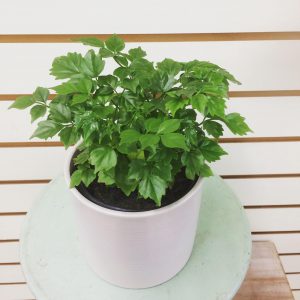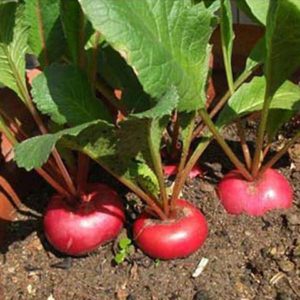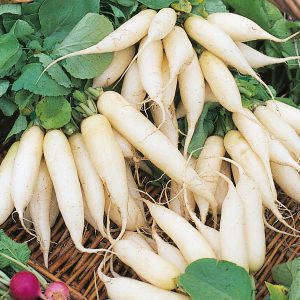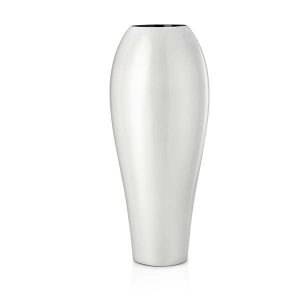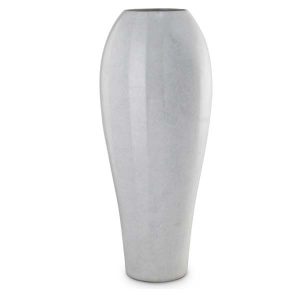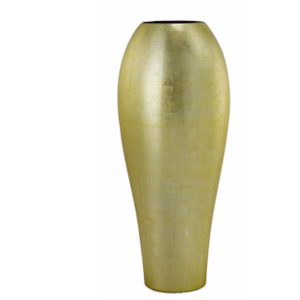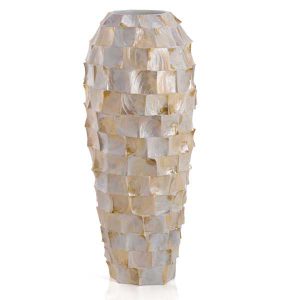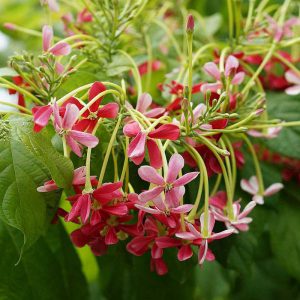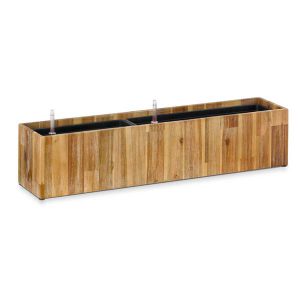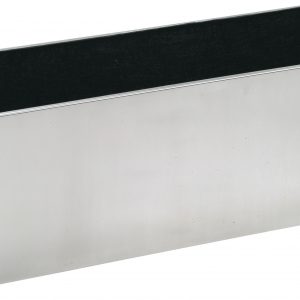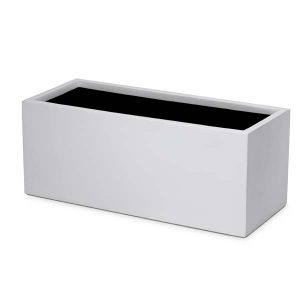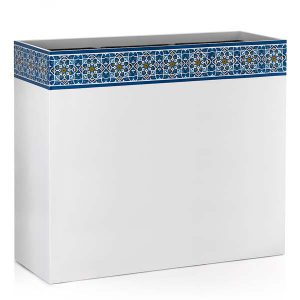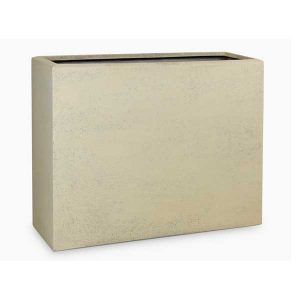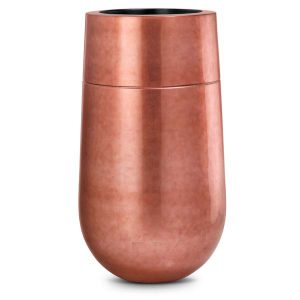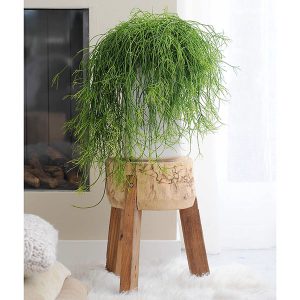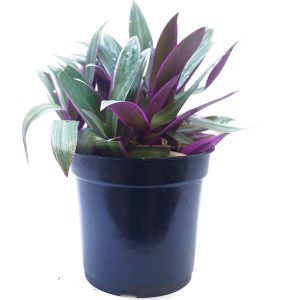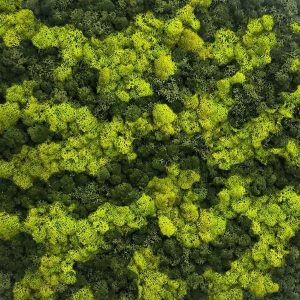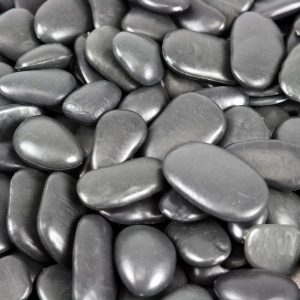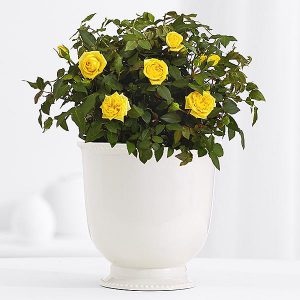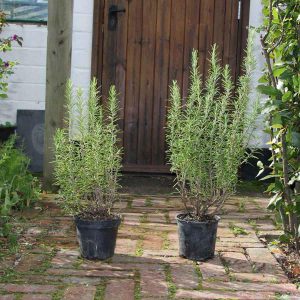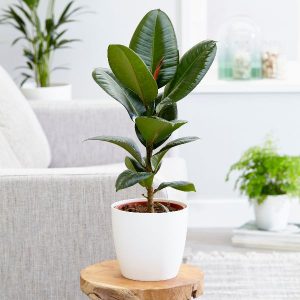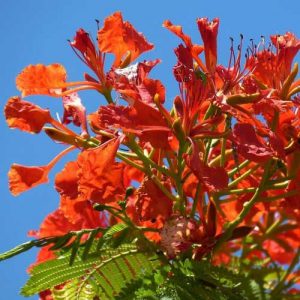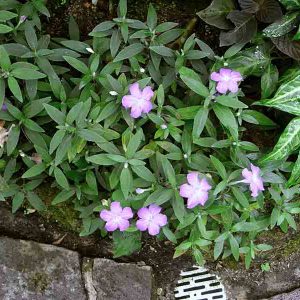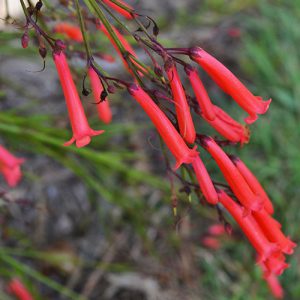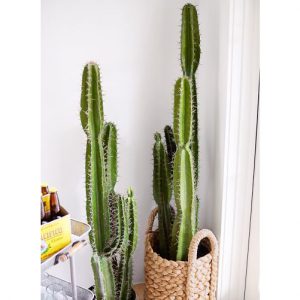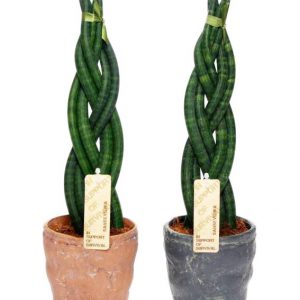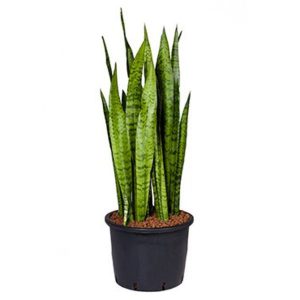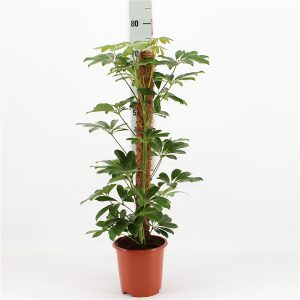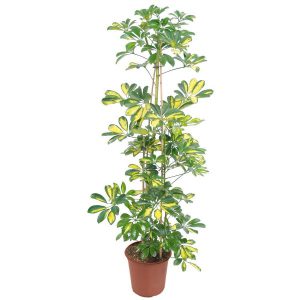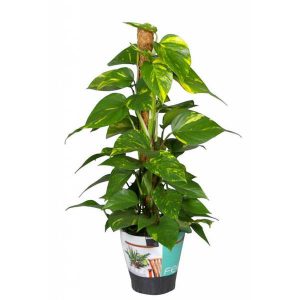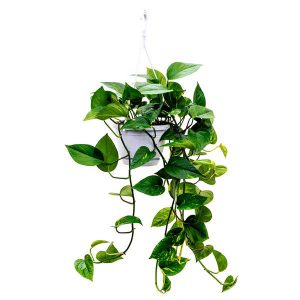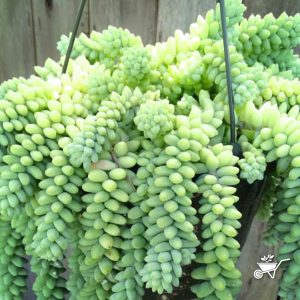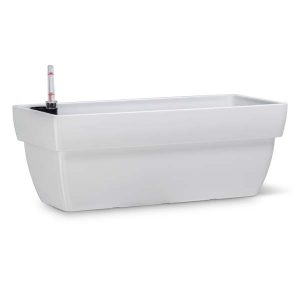Shop
Radermachera sinica
For best growth, give your china doll plant a lot of bright (but indirect) sun. It needs at least 4-5 hours of sun per day, even indoors. If you don’t have a spot in your house that gets that much light, you should consider purchasing indoor grow lights to supplement.
When watering, be careful. Too little or too much can wreak havoc on your china doll plant. The soil should be kept moist, but the roots shouldn’t be allowed to sit in water. Water only when the top inch of the soil is dry to the touch.
If your plant develops brittle leaves that turn yellow, it not getting enough water. Too much water is indicated by black colored tips.
When new foliage is developing, watering can be slightly increased and decreased again once the plant has become dormant.
AED 40.00Add to cart
Radish red
Radishes mature incredibly quickly (with some varieties taking only 3 weeks from seed to maturity), and they are very hardy. Their peppery flavor adds a kick to soups and salads, and they take up very little space in the garden. To begin successfully growing radishes, you’ll find the following instructions most helpful.
AED 200.00Read more
Radish white
Chinese white radish is a cruciferous vegetable that does well in conjunction with carrots, parsley or parsnips. The radish seeds are sown directly into the ground. Plant seeds 1/2 inch deep, one inch apart in rows spaced 12 inches apart. After sprouting, thin shoots to two inches apart. Watering frequently is imperative to maintain moist soil. Add nitrogen-rich fertilizer or manure to the soil to improve the root growth and leaf structure.
AED 50.00Read more
Rangoon creeper (quisqaalis indica)
Amongst the lush foliage of the world’s tropical forests one will find a predominance of lianas or vine species. One of these creepers is the Quisqualis rangoon creeper plant. Also known as Akar Dani, Drunken Sailor, Irangan Malli, and Udani, this 12-foot long vine is an aggressively fast grower which spreads rapidly with its root suckers.
The Latin name for rangoon creeper plant is Quisqualis indica. The genus name ‘Quisqualis’ means “what is this” and for good reason. Rangoon creeper plant has a form more closely resembling that of a shrub as a young plant, which gradually matures into a vine. This dichotomy flummoxed early taxonomists who eventually gave it this questionable nomenclature.
AED 70.00Add to cart
Reindeer moss
Provide your reindeer moss with good quality air. Reindeer moss does not grow roots, and draws minimal nourishment from host plants like trees. It depends on the air for almost all of its nutrients, and will not sustain itself in highly polluted areas.
AED 200.00Add to cart
Rhipsalis Amelie
Rhipsalis does not thrive in direct sunlight. Exposure to afternoon sun can burn the leaves, turn them yellow, or lead to spotting. However, without sufficient sunlight, They will not bloom, and its growth can be stunted. Rhipsalis does best with morning sun and full shade in the afternoon. As Rhipsalis is commonly grown indoors, care must be given to the placement of the plants. They should be kept at least 20 inches (50 cm) away from windows that receive midday or afternoon sun. The glass in the windows can multiply the heat from the sun’s rays, causing sunburned leaves. Keep in mind that in its native environment, Rhipsalis is accustomed to receiving light that has been filtered through dense, overhanging tree branches. Picturing this environment can help you adjust your lighting accordingly.
Rhipsalis is not a drought-resistant plant, so regular watering is essential. Over-watering, however, can cause weak stems and rotted roots. Using a watering can may help you measure the amount of water you are providing. The size of the pot compared to the size of the plant, the humidity levels in the home, and the type of potting soil used can all affect the watering frequency. Rhipsalis seldom needs to be watered more than once a week. Check before watering by pressing your finger into the soil to a depth of half an inch. Postpone watering if the soil is moist. You can also use a moisture meter to help you determine whether it is time to water.
AED 125.00Add to cart
Rhoeo dis colour
Rhoeo, including Rhoeo discolor and Rhoeo spathacea, is a plant of many names. Depending on where you live, you may call this plant moses-in-the-cradle, moses-in-a-basket, boat lily and oyster plant. Whatever you call it, Rhoeo makes an excellent and fast growing ground cover in the garden.
AED 5.00Add to cart
Rindeer moss (Preserved)
Provide your reindeer moss with good quality air. Reindeer moss does not grow roots, and draws minimal nourishment from host plants like trees. It depends on the air for almost all of its nutrients, and will not sustain itself in highly polluted areas.
Avoid allowing animals to nibble at your reindeer moss. Reindeer moss is a slow-growing lichen species that can take up to 30 years to regrow if the top layer is damaged.
River stones (Black, White and Tiger Brown)
Indoor Plant Hire provides customers with a range of indoor plant decoration products including desk and pot plants as well as a variety of decorative pebbles.
Different decorative pebbles are used depending on the situation and client requirements.
Optional decorative mulches to cover the soil are also available from IEQ Indoor Plant Hire, and environmentally friendly recycled materials such as rubber and glass toppings are also used.
Commonly used decorative pebbles from IEQ Indoor Plants include:
Taupe pebbles
Black polished pebbles
Large white pebbles
White crushed pebbles.
AED 40.00Add to cart
Rosa plant
Caring for rose bushes is important to their overall health and vigor, especially when it comes to watering. Roses require at least an inch of water weekly throughout their growing season, beginning in spring or following spring planting. While overhead watering is suitable before the onset of new growth, it is often better to water these plants at the soil line using soaker hoses or similar means. Rose bushes are very susceptible to fungal diseases, such as black spot and powdery mildew, especially when their foliage is kept too wet.
AED 45.00Add to cart
Rosemary
Growing rosemary indoors is sometimes a tricky thing to do. Many good gardeners have tried, and despite their best efforts, end up with a dry, brown, dead rosemary plant. If you know the secrets to proper care of rosemary plants growing inside, you can keep your rosemary plants growing happily indoors all winter long.
AED 20.00Add to cart
Roubusta (Rubber Plant)
There are a number of Ficus elastica varieties grown successfully indoors which includes, “the most common one” F.elastica decora (has shiny leather type leaves which grow to a foot long), F.elastica robusta (has larger leaves than decora), F.elastica black prince or burgundy (has near black reddish leaves) and a selection of variegated types.
AED 195.00Add to cart
Royal poinciana -delonix regia
Given proper care, royal poinciana (Delonix regia), also known as flamboyant tree, peacock flower and flame tree, celebrates late spring with color. Flame-red clusters of 5-inch blooms drench the gray-barked branches before their foliage unfurls. Fernlike leaves soon follow, and the show continues through midsummer. Long, ornamental seedpods replace blooms by season’s end. The tree reaches 30 to 40 feet tall and spreads 50 or more feet, with its branches forming an umbrella of filtered shade. Hardy in U.S. Department of Agriculture plant hardiness zones 10 through 12, royal poinciana has no serious disease, insect or other problems when its basic care needs are met.
AED 250.00Add to cart
Ruellia ciliosa
Easy to care for and great for use as coverage, ruellia plants offer unique beauty to landscape areas. So, what is ruellia and can this Mexican native be cultivated in our own home garden landscape? Keep reading to learn more about growing ruellia.
Ruellia flowers are 2-inch long funnel-shaped blooms growing on a perennial shrub. Originally native to Mexico, it is now found in the Southwest United States, naturalized in many areas. Ruellia flowers from mid spring through the first frosts of fall with purple or blue blooms (on occasion red or pink) on purple stems.
AED 5.00Add to cart
Russellia equisetiforms (fire caricker plant)
Light: Bright light to full sun. Firecracker plants require lots of light to bloom. Move it outdoors for the summer and set it in the sunniest spot you can provide.
Water: Water thoroughly, allowing the top of the soil to dry out between waterings. Mature plants are drought-tolerant, so it’s a good idea to keep them on the dry side.
verage room temperatures 65-75°F/18-24°C. If you move your plant outside for the warm months, don’t worry — it can take the heat. It’s hardy in USDA Zones 9b-11. It won’t tolerate freezing temperatures.
AED 20.00Add to cart
Saguaro cactus
Water the saguaro every 10 to 14 days. The soil should dry out completely before you need to water again. Check the soil to 4 inches deep with your fingers. If you feel even a slight bit of moisture, wait a few days to water. Even though the Saguaro is indoors, you should still follow a seasonal watering schedule. When the nighttime temperatures dip below 60 degrees F, discontinue watering altogether until the nighttime temperatures stay above 60 degrees F.
AED 50.00Read more
Sanseviera Twester
Sansevieria Twister
Family: Agavacee
Country of origin: plant originating from tropical regions in Africa
Blooming season: the plant blooms at the end of summer (but rarely)
History and curiosities: also called “snake plate” or “mother-in-law’s tongue”, this strong plant has leathery leaves which grow with slight undulations.
AED 190.00Read more
Sanseviera Zeylanica
Sansevierias are some of the toughest plants you can find. Whether indoors, in your garden or on your balcony, these spiky beauties can put up with almost anything. They’re easy as can be, but there are a few things you should know. This post is all about Sansevieria, aka Snake Plant, care. You’ll see how low maintenance they really are!
AED 115.00Add to cart
Schefflera Combacta
The schefflera houseplant is a popular plant and comes in many varieties. The most well known are the umbrella tree and the dwarf umbrella tree. One of the reasons the plant is popular is because schefflera plant care is so easy, but, while schefflera care is easy, the plant does need to be cared for. Keep reading to learn more about growing schefflera and keeping it healthy and lush
AED 140.00Add to cart
Schefflera Combacta Gold
The schefflera houseplant is a popular plant and comes in many varieties. The most well known are the umbrella tree and the dwarf umbrella tree. One of the reasons the plant is popular is because schefflera plant care is so easy, but, while schefflera care is easy, the plant does need to be cared for. Keep reading to learn more about growing schefflera and keeping it healthy and lush
AED 125.00Add to cart
Scindapsus aureus
Scindapsus aureus is the scientific name of the “money plant” grown in homes in Asia. Epipremnum aureum is another scientific name that many consider synonymous. Besides “money plant,” other commonly used names for this plant are “pothos,” “silver vine,” “devil’s ivy,” “and “Solomon Islands ivy.”
This plant is native to Southeastern Asia and New Guinea. It belongs to the Araceae family, which contains more than 100 genera.
The plant is called a money plant because its leaves (round, flat, heart-shaped, dark green, and plump) resemble coins. It is a perennial and may be grown as either a trailer or a climber. Young plants bear three- to four-inch-long heart-shaped leaves. This plant is grown mainly indoors.
AED 55.00Add to cart
Scindapsus hanging
Native range extends from Northern Australia through Malesia and Indochina into China, Japan and India. The species have become naturalised in tropical and sub-tropical forests worldwide, where it has caused severe ecological damage in some cases. Scindapsus aureus can become a highly invasive species when introduced into tropical countries where it is not native. Having no natural enemies, it completely overgrows the forest floor as well as the trunks of trees, causing severe ecological disruption.
AED 30.00Add to cart
Sedum borrito hanging
he common name burrito sedum refers to Sedum morganianum “Burrito,” a cultivar of sedum also known as burro’s tail and grown for its long, trailing stems and plump, densely packed foliage. It cannot tolerate frost and only survives outdoors above U.S. Department of Agriculture plant hardiness zone 10b, so it is best grown as a houseplant in cooler areas. Despite their frost tenderness, burrito sedums are relatively hardy and thrive with little hands-on care. However, they must be regularly watered during the active growing season and provided with suitable levels of light and warmth to prosper.
AED 145.00Add to cart

